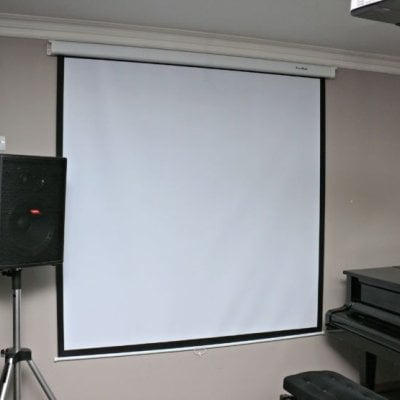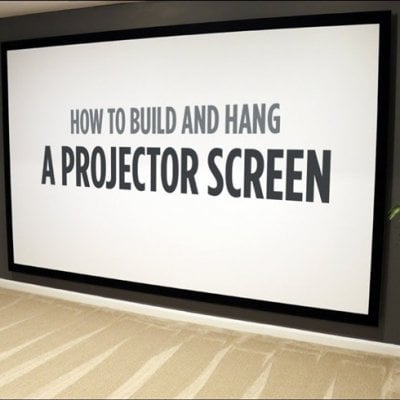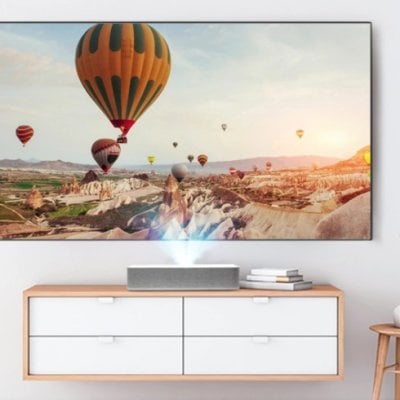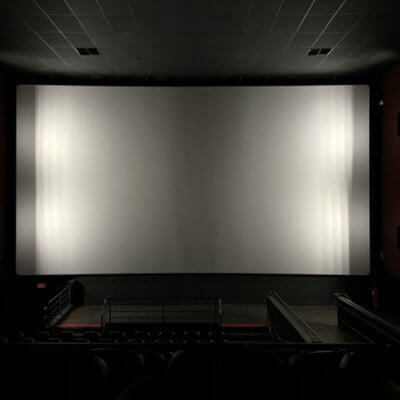
Generally speaking, to create cinematic experience, a projector screen is required while a projector is displaying images. However, here comes a new trendy alternative: projector screen paint.
You might wonder whether screen paint really works, or would it be functionally equivalent to traditional screens. Keep on reading to find out.
What is projector screen paint?
Unlike regular paint, screen paint is a water-based solution that turns the wall into a high-performance projection display. You’re allowed to use it on any flat objects and DIY a screen to your demand, and no need of professional assistance. If you are to save money, bare white wall would suffice as well. But make sure it’s smooth enough and expect some image downgrades to happen.
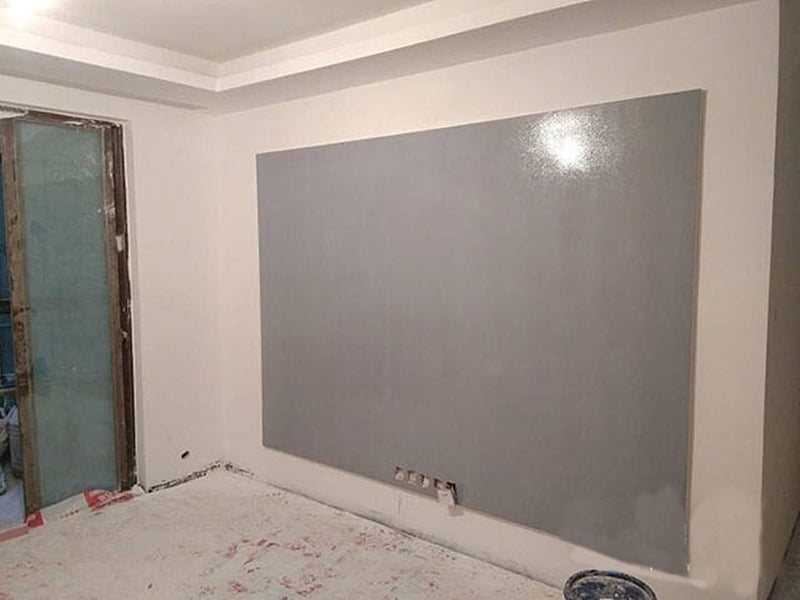
Projector screen paint vs. Genuine screen
Firstly, they enjoy respective merits, like projector paint is no limit to shapes and allowing wider viewing cone, while screens are basically square and subjected to a certain viewing cone. Projector paints have longer lifetime and easy to clean, while screens face risks of deoxidation and bends caused by improper operation. However, when it comes to make the image to look its best, screens get the better of paints. Since even the best screen paint is not competent enough in reducing ambient light reflection.
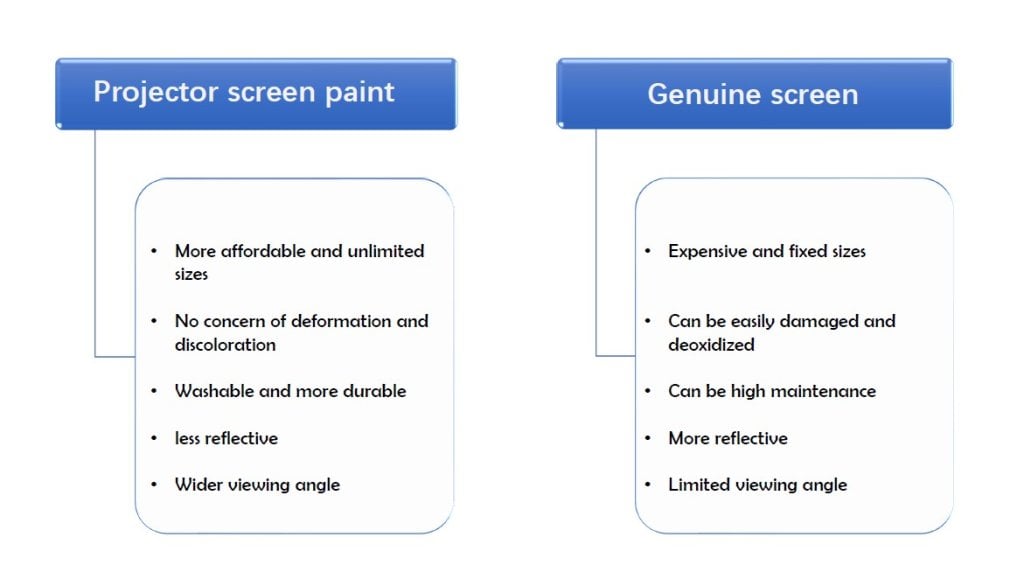
What to notice when buying screen paint?
Keep in mind the word: gain. Screen paint feature with high gain means you’re treated with bright images. Technically, 1.5-2.0 gain deliver the optimum brightness and color saturation. However, dazzling as it is, a long time viewing in a dark room may result in visual fatigue. So, it’ not necessary to blindly pursue for high gain. 1.2 gain is a relatively good option. Notice, however, you do need to go for high gain value around 2.0 if you own a small projector, for it doesn’t emit much enough light itself.
Granted, screen paint costs much less than screen, but if you are looking for a huge surface for projection use, then a few buckets of screen paint together might cost you more than a screen.
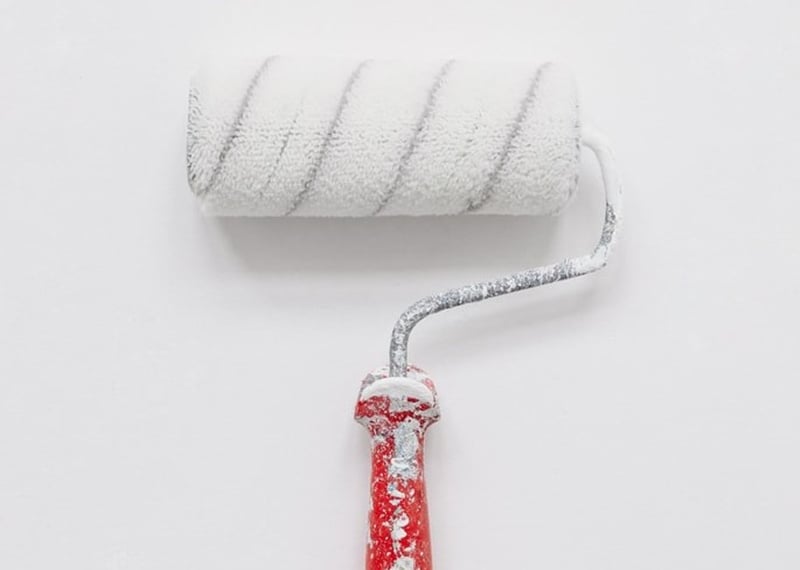
On the whole, the rising of screen paint has reasons. The biggest advantage is that it is “invisible”, which means no extra space is occupied. It only takes a second to switch between a normal wall and a projector screen. The moment you turn off your projector, the viewing process comes to an end, no labor required to pull up or pack up the screen. On the other hand, projector screen paint is more durable and less fragile than screens. Maintenance is not a big concern as you can wash it occasionally.

